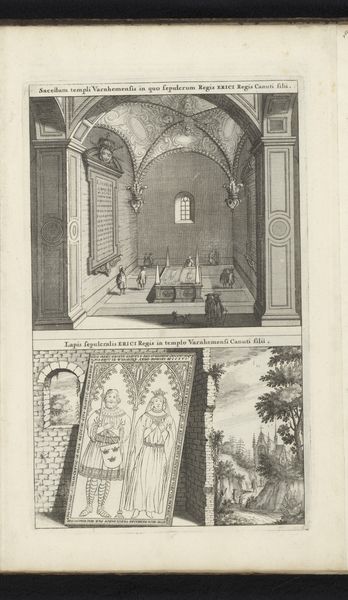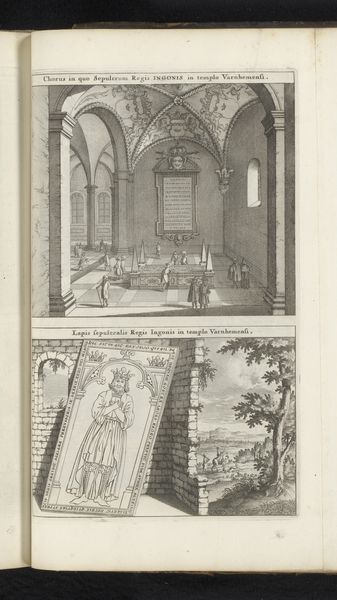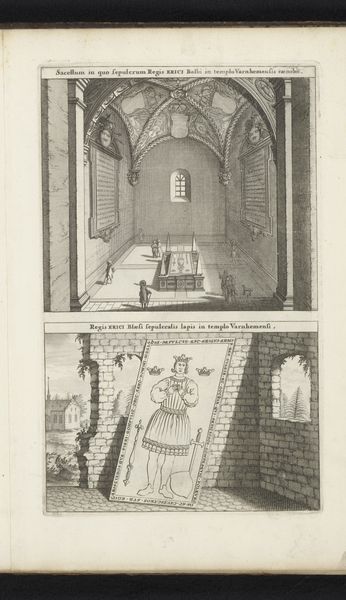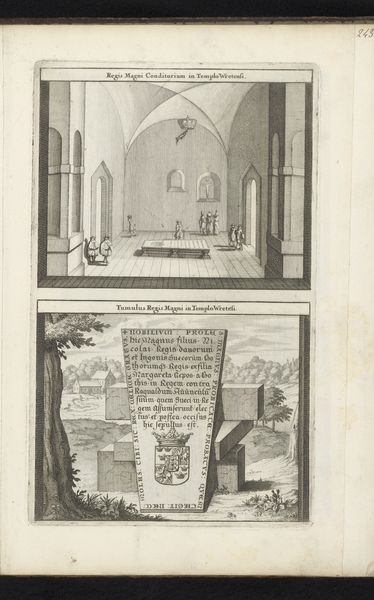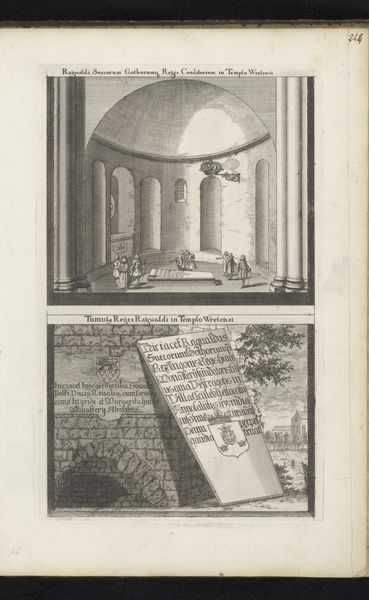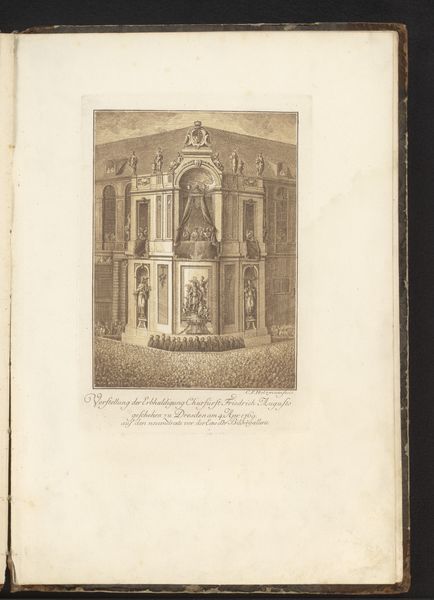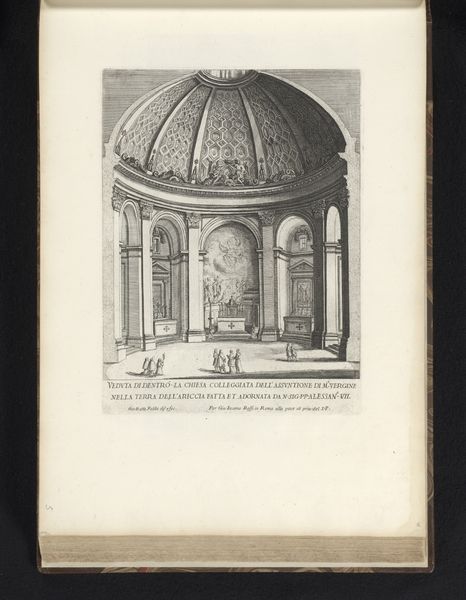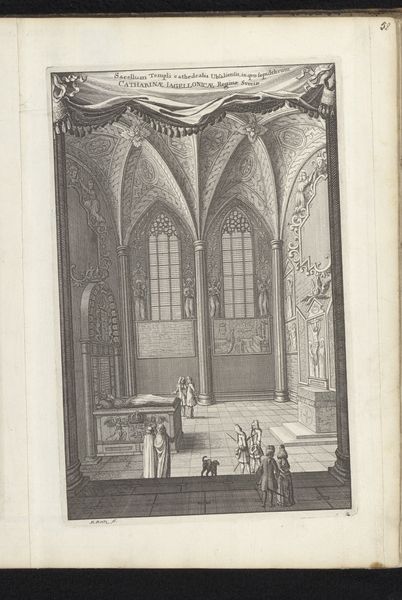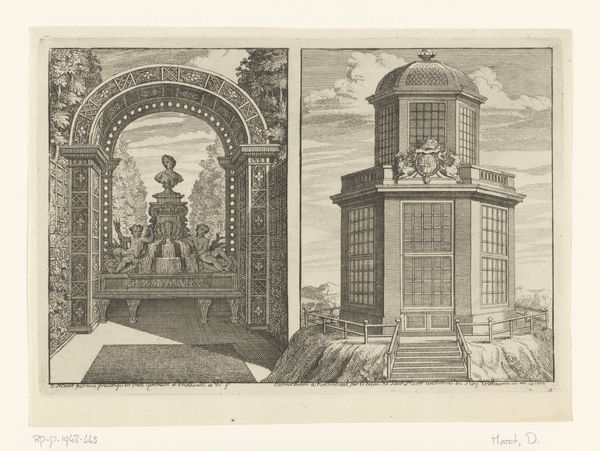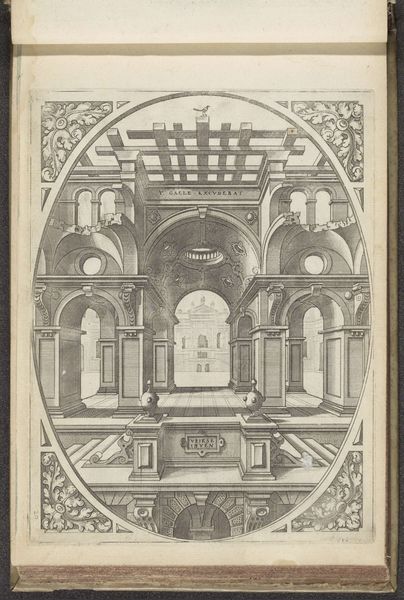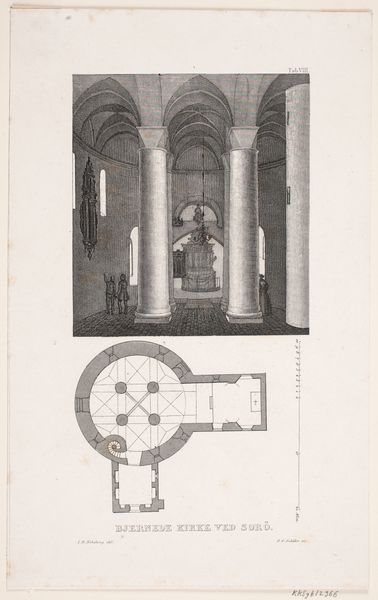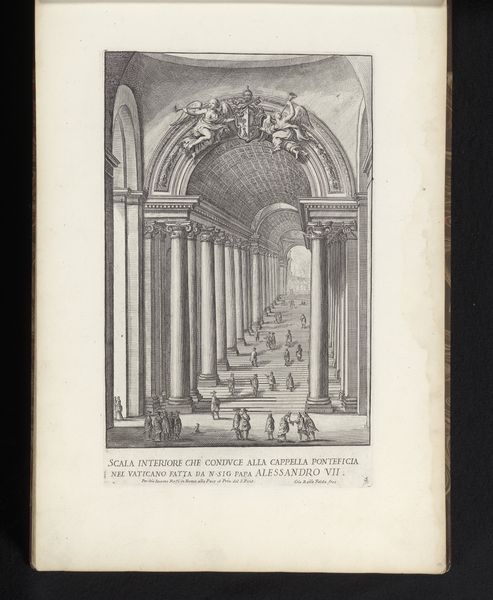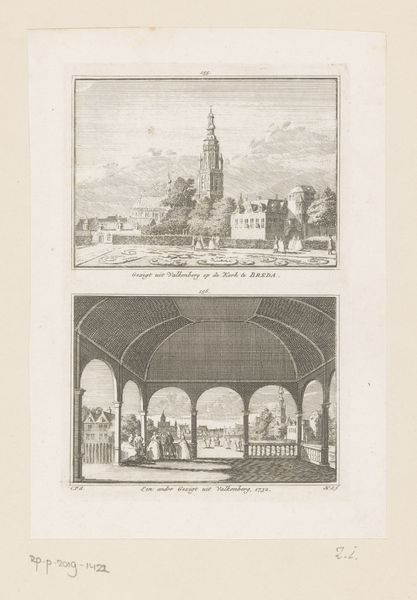
Kapel en grafsteen van Knoet I van Zweden in de kloosterkerk van Varnhem 1692
0:00
0:00
willemswidde
Rijksmuseum
print, engraving, architecture
#
baroque
# print
#
landscape
#
line
#
cityscape
#
history-painting
#
engraving
#
architecture
Dimensions: height 264 mm, width 165 mm
Copyright: Rijks Museum: Open Domain
Curator: Willem Swidde’s 1692 engraving, "Kapel en grafsteen van Knoet I van Zweden in de kloosterkerk van Varnhem," presents us with two distinct yet interconnected views. It is currently housed in the Rijksmuseum. What's your immediate reaction to it? Editor: It feels stark. The precise linework, the contrast between the interior chapel and the exterior tombstone – it evokes a sense of rigid formality and perhaps the cold finality of death itself. Curator: Absolutely. Swidde's rendering offers a glimpse into 17th-century Swedish perceptions of power, faith, and remembrance. Looking closely, the upper portion illustrates the chapel's interior, filled with ornate arches and details framing what appears to be Canute I's tomb. The figures inside lend it a feeling of ceremony and hallowed space. The lower portion depicts the tombstone, presenting the late king, almost iconic in the center. The very conscious choice to give context to the place itself where his memorial can be found points toward his relevance. Editor: It's interesting how Swidde contrasts the grandeur of the chapel with the king's individual portrayal on the tombstone. The architecture speaks to the power of the institution and its rituals. Simultaneously, the engraving of Canute, surrounded by the ruins and landscape, speaks to the enduring individual legacy against the shifting tides of time and nature. The division could perhaps show both the church and nature can preserve a man's deeds in this world. Curator: I concur. The setting highlights Canute’s placement within the lineage of Swedish power. Furthermore, considering Swidde was working during a time of shifting political dynamics in Europe, the piece could comment on themes of identity and nationhood in relation to royal power. The chapel’s presence in the background subtly alludes to religious and moral dimensions of Canute's reign and impact, reminding viewers of the intersections of these power structures. Editor: So, as we reflect, this engraving prompts a wider consideration about how we create national mythologies and memorialize leadership through both architectural majesty and enduring symbolism. Curator: Precisely. Swidde's piece enables contemplation of identity, legacy, and the roles both church and state play in preserving historical memory.
Comments
No comments
Be the first to comment and join the conversation on the ultimate creative platform.
